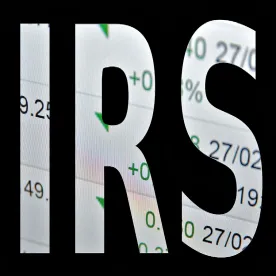The IRS recently released final regulations making a number of changes to the rules applicable to hardship distributions from 401(k) and 403(b) plans. Concluding our three-part series on the final regulations, this blog entry will focus on the following changes to the hardship distribution rules: (1) modifications to the list of safe harbor expenses that qualify for hardship distributions, and (2) additional contribution sources that are now available for hardship distributions.
Modifications to Safe Harbor Expenses:
Distributions made for certain “safe harbor” hardship expenses are deemed to be made on account of an immediate and heavy financial need. The final regulations modify this list of safe harbor expenses as follows:
-
Casualty loss: Employees may receive hardship distributions for expenses to repair damage to a principal residence if the expenses qualify for any type of casualty loss deduction under Code Section 165. As a result of the 2018 Tax Cuts and Jobs Act (TCJA), through 2025, the Section 165 casualty loss deduction by its terms is not available unless the loss is due to a federally-declared disaster. To avoid this unintended limitation on available hardship distributions, the final regulations modify the casualty loss safe harbor so that it covers casualty loss expenses regardless of whether the damage resulted from a federally-declared disaster.
The revised casualty loss definition may be applied on or after January 1, 2018. So, if a plan made casualty loss hardship distributions in 2018 without regard to the TCJA changes discussed above, the plan may be amended to apply the revised casualty loss definition effective January 1, 2018. That way, the plan provisions will conform to the plan’s operations.
-
FEMA-designated disaster: The final regulations add a new “FEMA-designated disaster” safe harbor expense category. Under this new category, hardship distributions may be made for expenses and losses incurred by an employee on account of a FEMA-designated disaster, provided that the employee’s principal residence or principal place of employment at the time of disaster is in the FEMA-designated disaster zone.
Note that prior disaster relief issued by the IRS extended the relief to expenses incurred by an employee’s dependents or qualifying relatives. The new regulatory safe harbor is narrower in that it only applies to expenses incurred by the employee. In the regulatory preamble, the IRS indicated that it does not anticipate issuing disaster relief by individualized notice in the future. As a result, plan sponsors cannot necessarily rely on extended deadlines to adopt disaster relief provisions.
Pending further guidance from the IRS, plan sponsors that wish to incorporate the FEMA-designated disaster safe harbor category into a plan’s hardship distribution provisions would need to do so by the end of the plan year in which the amendment is first effective. Like the revised casualty loss definition, the new FEMA-designated disaster category may be applied on or after January 1, 2018.
-
Primary beneficiary: Incorporating prior guidance issued by the IRS in Notice 2007-7, the final regulations clarify that hardship distributions for qualifying medical, educational, and funeral expenses may be made for expenses incurred by a participant’s “primary beneficiary” (someone named as a beneficiary and who has an unconditional right, upon the employee’s death, to all or part of the employee’s plan account).
Expanded Sources for Hardship Distributions:
Expanding the current contribution sources that may be distributed on account of hardship, the final regulations provide that sources available for hardship distributions from 401(k) plans include earnings on elective deferrals, qualified non-elective contributions (QNECs), qualified matching contributions (QMACs), and earnings on QNECs and QMACs, regardless of when contributed or earned. Plan sponsors are not required to expand the available sources and may continue to limit the amounts available for hardship distributions consistent with the prior rules.
-
Special note for 403(b) plans: Earnings on pre-tax deferrals made to a 403(b) plan continue to be ineligible for hardship distributions. However, QNECs and QMACs in a 403(b) plan that are not held in a custodial account would be eligible for hardship distributions. QNECs and QMACs in a 403(b) plan that are held in a custodial account continue to be ineligible for hardship distributions.
Reminder – Plan Amendment/Operational Changes Required:
As summarized in our prior blog entry, individually-designed 401(k) plans that currently permit hardship distributions will likely need to be amended to reflect the final regulations by December 31, 2021. The amendment deadline for pre-approved 401(k) plans is more complicated and depends on several factors; however, generally, the deadline to make changes for the final regulations would likely be the employer’s tax filing deadline (plus extensions) for 2020. The amendment deadline for 403(b) plans is similarly complicated. Although the general remedial amendment deadline for 403(b) plans is March 31, 2020, as a result of recently-released Rev. Proc. 2019-39, both individually-designed and pre-approved 403(b) plans will likely have additional time to adopt plan amendments relating to the final regulations.
In addition to monitoring the plan amendment deadlines summarized above, plan sponsors should also be aware that if a plan currently imposes a six-month suspension of contributions following a hardship distribution, the suspension must be eliminated for hardship distributions on or after January 1, 2020.




 />i
/>i
